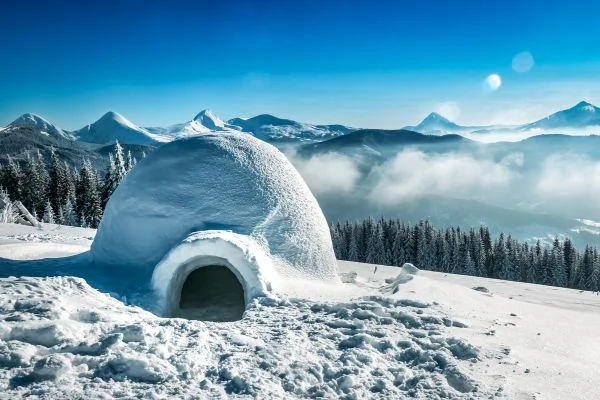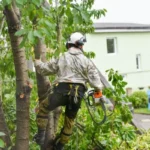Is camping in cold weather a good idea? Are you worried about camping in cold weather checklist? Camping in cold weather is also an excellent opportunity to enjoy nature’s beauty. You can do this by being a part of a group or going on your own. You can also go for a trek or hike in the wilderness. Children can also enjoy the experience when traveling with their families. They can play with snowballs, build a snowman, and go sledding. Make sure you have enough supplies for the cold weather. For instance, you need extra clothes for yourself and your kids.
Few Things To Consider–Camping In Cold Weather Checklist
Before venturing out into the cold weather camping, there are a few things to consider. Make sure you have the proper gear to keep you warm, have a plan for keeping your food and water from freezing, and be prepared for extreme weather conditions.

Proper Gear:
- A tent that can stand up to high winds and heavy snowfall
- Sleeping bags rated for below-freezing temperatures
- extra blankets or quilts
- Clothing in layers that can be added or removed as needed
- Hats, gloves, and scarves to keep your head and extremities warm
- Waterproof boots
- A stove or other means of heat source
Keeping Food and Water From Freezing:
- Store food in an insulated cooler.
- Pack water bottles or jugs in insulation sleeves.
- Melt snow to use for drinking water, but boil it first to purify.
Extreme Weather Conditions:
- Be aware of the forecast before heading out.
- Know the signs of hypothermia and frostbite.
- Have a plan for what to do if someone in your party becomes affected by the cold weather.
Clothing and Layering Essentials:
Cold-weather camping calls for proper clothing. Thermal base layers wick moisture away from your skin, keeping you dry and warm. Layering is key, so wear fleece or down jackets for extra warmth. For protection against the elements, your outer shell should be durable, waterproof, and windproof. Be sure to wear insulated pants to keep your lower body warm.
Avoid frostbite by wearing hats, gloves, and scarves on your extremities. Keep your feet comfortable and safe with warm, moisture-wicking socks and insulated, waterproof boots. If your primary clothes get wet, always have spares, especially socks and gloves. Layering and adjusting your body temperature throughout the day is key to staying warm. Now you know about camping in cold weather checklist.
Shelter and Insulation Options:
Choosing the right shelter and insulation is crucial when camping in cold weather. Four-season tents are designed to withstand harsh conditions and provide better insulation. Be sure your sleeping bag is rated for the temperature, and use a sleeping pad to keep your body warm.
For extra protection in case of unexpected weather changes, take a bivvy sack or emergency shelter. Make sure your tent is safe by clearing snow with a snow shovel. In cold weather, make sure your shelter and insulation are set up properly so you can sleep well.
Read More: How To Keep Water Cold In Hydration Pack?
Fire and Heating Preparations:
A reliable source of heat is essential in cold weather. To stay warm and cook hot meals, you need a camp stove and plenty of fuel. Make sure you have fire-starting tools and lighters in waterproof containers so you can start a fire even when it’s wet.
Add some warmth inside your shelter with a portable heater or hot water bottle. If you’re allowed to make a fire, bring firewood, but follow local rules and use fire rings or designated areas. You need proper ventilation when using heaters and stoves inside tents to prevent carbon monoxide buildup.
Navigation and Communication Gear:
Now, you should know the answer to what things need for camping in cold weather checklist. Snowy terrain can be tricky to navigate, so make sure you’ve got the right gear. When landmarks are obscured by snow, a GPS device or compass is essential. Plan your routes and identify potential hazards with detailed maps and trail guides.
Satellite phones or two-way radios can be used in remote areas where cell service may be unreliable. If you’re hiking in low light, pack a headlamp with extra batteries and a signal whistle so you can attract attention in case of an emergency.

Safety and Emergency Supplies:
When camping in cold weather, safety should always be a priority. Pack a first aid kit with supplies for treating cold-related injuries, like frostbite. If you’re camping in an avalanche-prone area, make sure you’ve got the right gear, like beacons, probes, and shovels. They’re light and compact, but they can save your life in extreme cold.
When it’s cold, you’ll need a repair kit with essential tools to fix gear and equipment. Finally, a survival guide can be a valuable resource for dealing with unexpected situations, giving tips on building emergency shelters, finding water, etc. For added security, always tell someone your plans and expected return time when camping in cold weather.
By following these simple tips, you can ensure that your camping in cold weather checklist is a success! When camping in cold weather, make sure you’re prepared and pay attention to safety. You should tailor your checklist to the specific conditions and activities you’re going to face. If you’re going camping in extreme cold, make sure you check the weather forecast and let someone know what you’re doing.
Is Camping Good In Winter?
Winter camping can be fun and rewarding, as long as you’re prepared. Snow-covered landscapes, fewer crowds, and unique cold-weather activities like ice fishing and snowshoeing can make winter camping memorable. There are, however, some challenges.
You’ve got to deal with freezing temperatures, snow, and potentially harsh weather. Winter clothing and sleeping bags are essential, but they can be expensive. In winter, the days are shorter, so outdoor activities are limited, and hypothermia and frostbite are real concerns. There’s also a chance that some camping spots won’t be accessible because of snow or road closures. Winter camping can be great fun if you’re prepared, like the cold, and are up for the challenges that come with it.
Conclusion
Camping in cold weather can be a great experience as long as you are prepared. Ensure you have the proper gear to keep you warm and dry, food and water that won’t freeze, and a plan for extreme weather conditions. By following these tips, you can ensure that your trip is successful. We hope now you know all the things you need for camping in cold weather checklist.
Read More: How To Cut Wood Without A Saw?
FAQs
How Cold Is Too Cold To Camp?
It depends on your gear and level of preparedness. Sleeping bags rated for below-freezing temperatures, extra blankets or quilts, and clothing in layers are a good start. Pack hats, gloves, and scarves to warm your head and extremities. Waterproof boots are also a necessity. If you have all of these things, you should be able to camp in temperatures as low as 0 degrees Fahrenheit.
What If I Don’t Have A Tent?
If you don’t have a tent, you can try to find shelter in a cave or make a lean-to out of branches and leaves. However, these options will not protect you from the elements or a proper tent.



